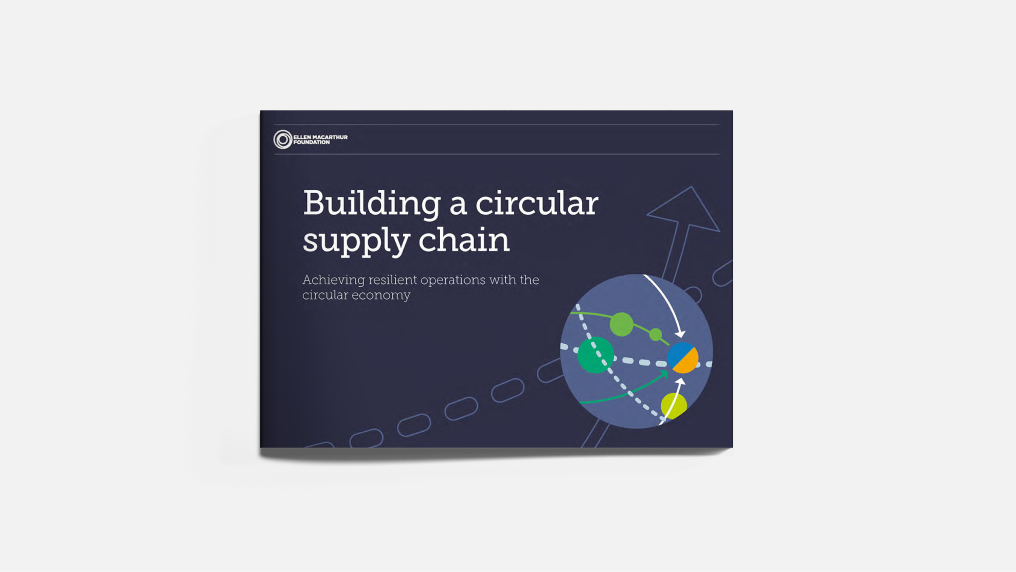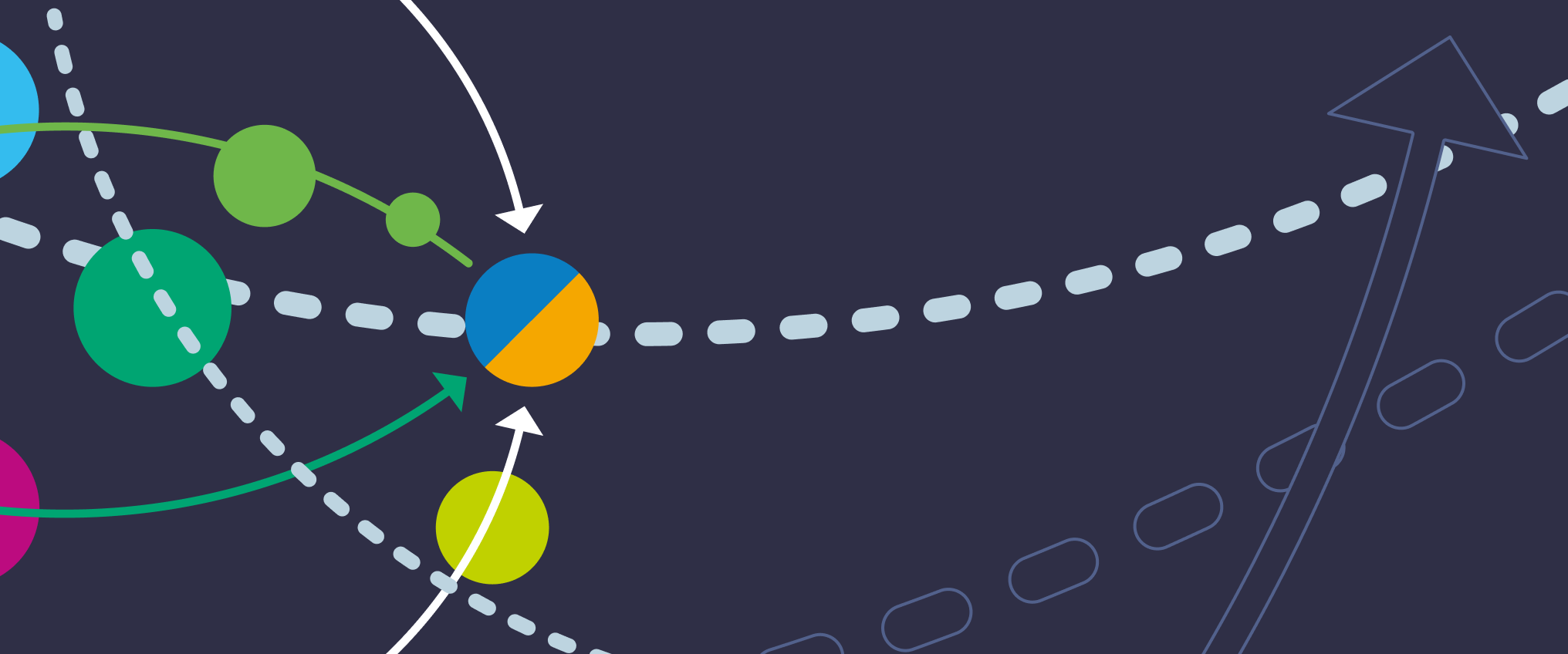Supply chain leaders are fundamental players in the transition to a circular economy. They are responsible for sourcing and moving 100 billion tonnes of materials that enter the global economy each year.
Traditional supply chains are designed with the linear economylinear economyAn economy in which finite resources are extracted to make products that are used - generally not to their full potential - and then thrown away ('take-make-waste'). in mind – take, make, waste. But supply chain disruptions and environmental pressures are showing that a reconfiguration is urgently needed. To create a resilient system that is good for business, people, and the environment, a shift is needed to a circular economycircular economyA systems solution framework that tackles global challenges like climate change, biodiversity loss, waste, and pollution. It is based on three principles, driven by design: eliminate waste and pollution, circulate products and materials (at their highest value), and regenerate nature..
A circular economy allows supply chain professionals to address their core priorities, such as:
Increasing resilience
Reducing costs
Reducing greenhouse gas emissions

1. A distributed and interconnected network of partners
Circular supply chains leverage a mix of local and global partnerships, where customers or industry peers often become suppliers or partners in circulating products and materials. This makes supply chains more resilient and provides both cost and environmental benefits.
2. Multidirectional flows of information, goods, and money
Circular supply chains enable the effective circulation of products and materials because they facilitate better flows of information. Crucial information, like the location, material composition, or disassembly options of an item must be available to partners throughout the supply chain.
3. Circular inputs and processes
Circular inputs are non-virgin and/or regeneratively grown products and materials, while circular processes are interventions – such as maintenance, repairrepairOperation by which a faulty or broken product or component is returned back to a usable state to fulfil its intended use., refurbishment, remanufactureremanufactureRe-engineer products and components to as-new condition with the same, or improved, level of performance as a newly manufactured one., and recycling – that keep products and materials in circulation. Circular processes should aim to keep the maximum amount of embedded value of products and materials intact, resorting to recycling only when all other actions are exhausted or inappropriate. This can help displace the need for new extraction and production, avoiding negative impacts on the environment. Circular supply chains that are distributed, interconnected, and share information can also valorise unavoidable by-products by using them as circular inputs for other processes.

Explore the paper: Building a circular supply chain
Building a circular supply chain, produced in collaboration with the Circular Supply Chain Network, explains what circular supply chains are, the benefits and challenges in implementing them, and how supply chain leaders can transition their organisation’s supply chain from linear to circular.
What can supply chain leaders do to transition to circular supply chains?
The Ellen MacArthur Foundation white paper, Building a circular supply chain, highlights nine key areas supply chain teams can focus on to transform their organisation’s supply chain. The paper also gives recommendations and key questions to spark discussions.
Examples of the circular economy in Supply Chains
A regenerative supply chain alternative for palm oil
Dr. Bronner's is an American personal care company that relies on a high volume of agricultural raw ingredients to manufacture its soaps, toothpastes, and lotions. Many of these ingredients, in particular palm oil, are sourced from tropical areas, with global supply chains that are commonly associated with destructive environmental practices and the exploitation of local communities. After many years of unsuccessfully searching for an ethical and nature-positive source of palm oil, Dr. Bronner's decided to build one on its own.


Sign up to our newsletter
Sign up for our monthly newsletter and make sure to tick the “Supply chain” box below to receive the latest updates on circular supply chains.
ᴬ secondary (i.e. non-virgin) and/or regeneratively grown products and materials that can be circulated within the economy or safely returned to nature.
ᴮ actions done to inputs to allow their (re)introduction to the value chain and the retention of the maximum amount of their embedded value (i.e. maintenance, repair, refurbishing, remanufacturing, and, as a last resort, recycling).

